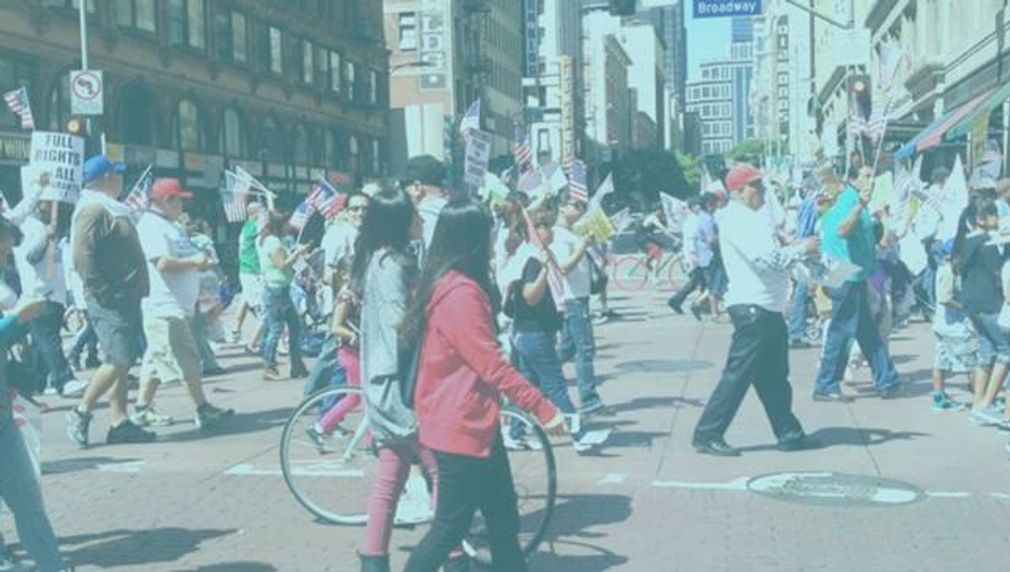More than Minivans: the Female Future of Transportation
Our activation will combine new data and new voices from women to influence policy and investments for a transportation system that serves and strengthens our entire region.

Please describe the activation your organization seeks to launch.
We envision a Los Angeles transportation system that intentionally connects the travel needs of women and mothers with policymakers’ planning, funding, and decisions. Our activation will combine new data, new voices, and new faces of transportation advocacy to influence policy and investments for a transportation system that serves and strengthens our entire region.
Which of the CONNECT metrics will your activation impact?
Government responsiveness to residents’ needs
Number of public transit riders
Transit-accessible housing and employment
Will your proposal impact any other LA2050 goal categories?
LA is the healthiest place to LIVE
In what areas of Los Angeles will you be directly working?
County of Los Angeles
How will your activation mobilize Angelenos?
Advocate for policy
Digital organizing or activism
Trainings and/or in-person engagements
Create new tools or technologies for greater civic/political engagement
Increase participation in political processes
Increase civic engagement and understanding of how transportation decisions are made -- Share advocacy and storytelling tools and training opportunities
Describe in greater detail how your activation will make LA the best place to CONNECT?
Everyone needs to get somewhere. We need to get to work, to school, to soccer games, to get food, everyday. In Los Angeles this is often easier said than done, particularly if your trips are invisible.
Only 16 percent of daily trips are for work, yet nearly all of Los Angeles’ transportation efforts go into improving travel for commuters. So what is happening for the other 84 percent of trips?
While we increasingly see women in the workforce, we still see traditional gender splits in different-sex parental households. Women tend to remain the primary caregivers, including making trips for school/child care, appointments, activities, and household errands.
Our LA2050 activation will daylight these trips, faces, and voices.
Transportation connects Angelenos with opportunity. But at its worst can prevent them from accessing resources and networks. Our activation will employ a multi-pronged strategy to ensure that women and mothers are not forgotten as we look to expand how our transportation network connects us.
Data and groundtruthing: Analyze national and regional travel data to analyze patterns we see in women workers, caregivers, and mothers. Preliminary findings will be shared with community organizations and members to identify alignment with their lived experiences.
Storytelling: Work with community organizations and local media to develop and distribute multilingual, multimedia stories of women’s daily needs and how transportation impacts them. This process will also teach women how to utilize film and photo to tell their own stories.
Education and advocacy: Host online and in-person advocacy trainings to co-power community members to advocate for their own transportation needs. Groundtruthed data and stories from the first two strategies will be used to message the unaddressed needs of women with transportation policymakers at these trainings.
We propose to utilize metrics recommended by LA2050 and our own suggested metrics we believe will measure successful impact of our activation:
Government responsiveness to residents’ needs (LA2050): Data-driven advocacy and humanizing stories will be used to influence regional transportation policy and funding decisions.
Transit-accessible housing and employment (LA2050): Transit improvements that serve both work and non-work trips will increase the connection between public transportation and daily origins and destinations.
Advocacy capacity (suggested): Individuals exposed to technical assistance in advocacy tactics and storytelling development, through both online and offline platforms. Includes, but not limited to, neighborhood councils (LA2050).
Transportation funding allocated based on non-work trip data (suggested): Formulas or metrics adopted in Metro countywide policy and funding frameworks that account for both work and non-work trips based on our data analysis and advocacy.
How will your activation engage Angelenos to make LA the best place to CONNECT
Investing in Place convenes diverse stakeholders to discuss transportation policy and investment issues through a range of event types. The advocacy component of our LA2050 activation would mirror our successful City of Los Angeles Tripping Point summits, which bring together local elected officials and public agency staff with over 100 community members and organizations to help demystify the City process and amplify the voices of community members to the public officials who serve them.
Our online engagement will anchor around digital education and storytelling formats to be distributed through our network of policymakers, published and social media, researchers, funders, and community organizations.
We will directly engage with hundreds of community members through our policy education, advocacy technical assistance, and storytelling training. We anticipate an echoing reach from their online and offline networks, such as neighborhood councils and clubs, parent associations, faith-based and cultural affiliations, local businesses and artists, etc. We also anticipate our policy education and groundtruthed data to reach elected officials and bring awareness to thousands of their constituents around new data as well as engagement opportunities for policy advocacy.
Please explain how you will define and measure success for your activation.
Where do you hope this activation or your organization will be in five years?
We imagine a Greater Los Angeles where we bridge the gap between policy thinkers, decision makers, and on-the-ground community leaders to reduce social inequities through public policies and investments. By investing in our most vulnerable neighborhoods, we improve public health and exceed environmental goals for the whole region. We recognize that equity is not a special interest, but in everybody’s interest.